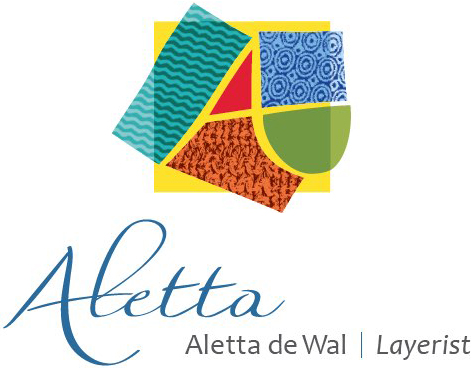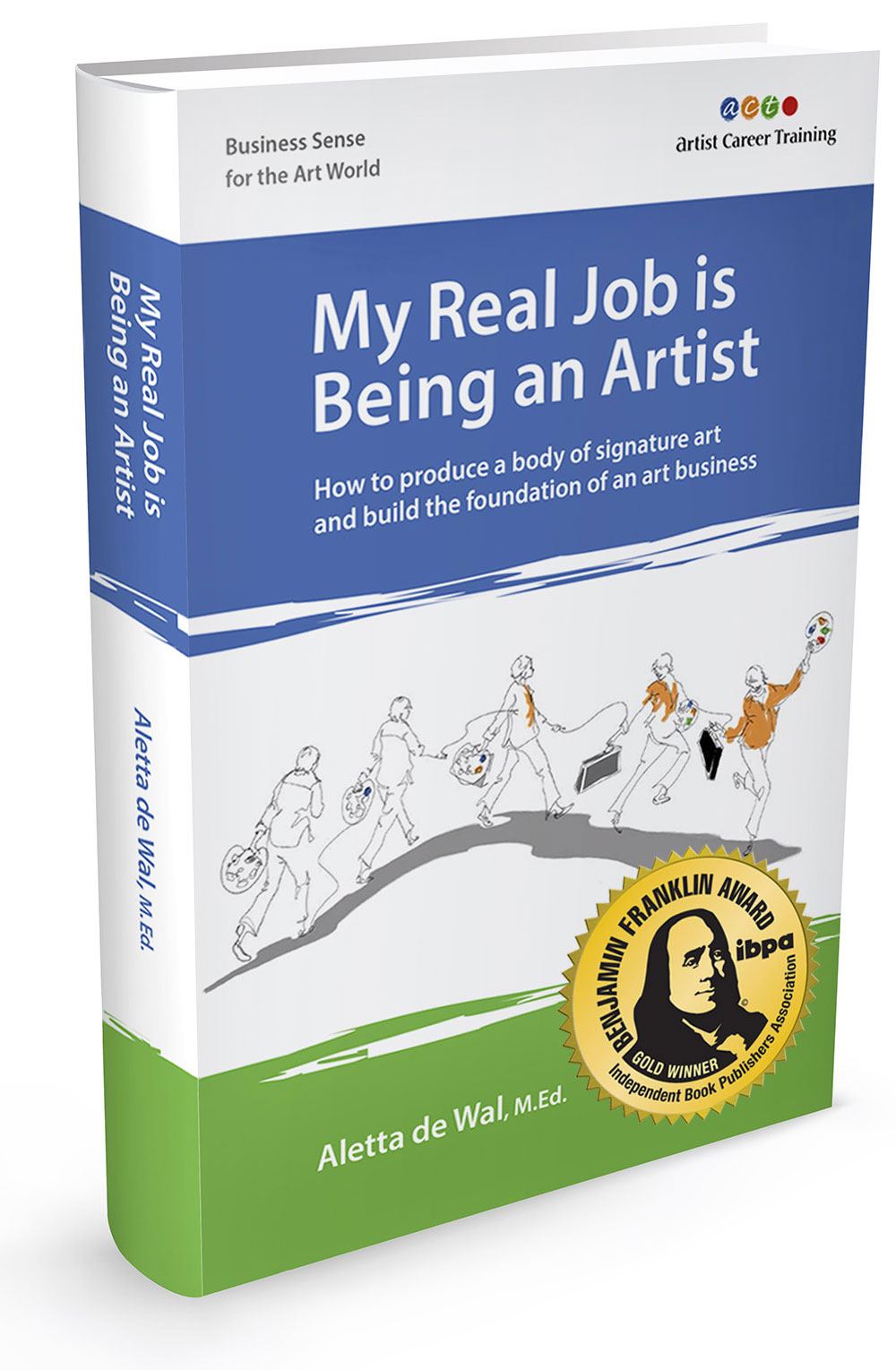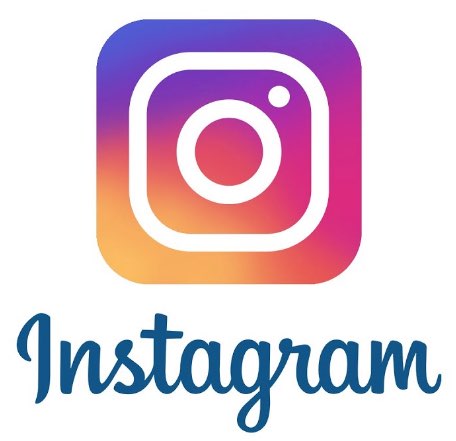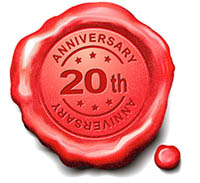My primary goal in these interviews is to inspire artists with stories of people who make a living from making art and who consider it a "real job."
Franck de las Mercedes: The Artist as Alchemist
The Evolution of an Art Career
Estimated reading time: 12 minutes
 Franck de las Mercedes – The Evolution of an Art Career
Franck de las Mercedes – The Evolution of an Art Career
When you ask Franck de las Mercedes what played a role in his evolution as an artist, he answers that it’s a combination of his experience as a child in his birthplace, war-torn Nicaragua, plus the visual clash of graffiti in New York, where he now works and lives, along with an interest in the abstract expressionism movement. His self-obtained education comes straight from the aisles of the Mid-Manhattan Public Library.
Franck integrates aspects of photography, drawing, journal entries and text art, in frenetic paintings with energetic abstractions bursting with color. He draws inspiration from his New York backdrop and references past experiences, the effects of childhood trauma and family relationships in life and books, to create psychologically charged imagery.
In 2006 Franck achieved international acclaim with “The Priority Boxes" - a conceptual public project conceived as a way to bring contemporary art to a broader audience. The boxes encourage people to participate in conversations about peace and challenge them to question their ability to influence change as well as the fragility, value and priority given to those concepts.
In the summer of 2012, an image of a “Peace Box” was exhibited on the iconic LED screens of Times Square. Over 16,000 Peace Boxes have been sent to over 70 countries across the globe.
In 2014, the New Jersey Senate and General Assembly passed a joint legislative resolution honoring Franck and the Peace Boxes Project. He was also recognized as an “Outstanding Latino” by the Union City Music Project for being a role model for students and a leader within the community.
The Priority Boxes project has been adapted as teaching tool for educators, community centers and art therapy counselors across the US.
On February 18, 2014 Franck lost over a decade of his body of work in a five-alarm fire that destroyed his home and studio in Weehawken, NJ. He relocated to Washington Heights, the upper Manhattan neighborhood where he grew up, and added a son to his family.
 Abstract Dataism - 2015 Acrylic and collage on canvas 48 x 48 in. ©Franck de las Mercedes
Abstract Dataism - 2015 Acrylic and collage on canvas 48 x 48 in. ©Franck de las Mercedes
This is my second interview with Franck. You can read the first one here: http://budurl.com/FDLMArtMatters2005
Welcome back to ArtMatters Franck. I know this is going to be a powerful conversation today. You’ve had some huge ups and a terrible down, but I know you are using all of those recent experiences in your art.
A.C.T.: You recently announced the end of the Priority Boxes Project. Please give a summary of the project for newcomers. Then tell us what brought you to the decision to move on.
The Priority Box project was always just an experiment! I never expected to be painting peace boxes ten years later, or be in Times Square, but the most rewarding thing is that they do continue in the schools as a teaching tool.
The interest in the project continues to grow, but it also has grown into a movement with a life of it’s own - to the point where I am being contacted by students who have already made their own box.
A teacher told me that one student was so inspired by the project that he went out and bought flowers and went to the park where he gave them out.
I’m still sending the remaining requests and will continue to offer special edition boxes while supplies last. I’m also still open to talks and visiting schools.
So it hasn’t ended, but I felt it was time for me to stop painting them and finally move on to other projects that I’ve kept in the back burner, that I am getting ready to start exploring.
A.C.T.: What major art and business milestones have you created since we last spoke?
There have been many exciting things that expanded my audience and therefore helped grow my business and become an independent artist.
- Complex Magazine named me among the 15 artists about to dominate in 2015. Seeing one of the peace boxes on the giant screens of Times Square was another special moment.
- Most recently taking part in the Faberge Egg Hunt NYC last year, where a painted egg sculpture of mine was exhibited in the streets of NYC at Rockefeller Center and ultimately sold in auction by Paddle8.
- This summer I participated in Sing for Hope Piano NYC 2015, followed by Hands for Mental Health in New Jersey.
On a sad life-changing note that affected all aspects of my life, I lost my entire body of work and our home in a five-alarm fire in early 2014. Businesswise it was devastating, but I think it helped me really appreciate how much I had grown as an independent artist.
Despite the huge loss, starting fresh from point zero can be something very liberating in a way. It’s also showed me how kind people can be and how my work with the boxes affected people in such a positive way to help us continue it and rebuild.
The fire also forced me to pull work I no longer had for sale out of all the selling platforms I was part of, which in a sense was a blessing in disguise and it help me pull back, be more selective when I started again and open my eyes to approaching my marketing differently. I weeded out and simplified many aspects of my art career. When you have nothing, you have nothing to lose.
I started more quickly than I thought I would. I was just organizing my digital records of my work and that showed me the magnitude of the loss. I’ve learned to say "no" more, and I am not all over the place the way I was. I am much more focused. I’m no longer on every social media site. I’m no longer throwing stuff everywhere. And I think it’s working.
I know what I am. And I know what I am not.
I’m not the artist in a gallery, so that frees me from restrictions in my current marketing. If that changes, we’ll talk about the ground rules.
If you think your art needs to be on a mug. Fantastic! Or in a gallery. Great! Then you need to be careful of legal issues. But that’s not for me. My aesthetic is different and I know what works and what doesn’t work.
A.C.T.: How has your artistic direction developed?
 Apariciones New York – 2015 Acrylic and collage on canvas 80 x 50 in. ©Franck de las Mercedes
Apariciones New York – 2015 Acrylic and collage on canvas 80 x 50 in. ©Franck de las Mercedes
Most recently I’ve been very interested in observing people on the street and extracting what I see into a work of art. It’s a wave that I’ve been riding since late 2012. But I also been exploring photography into the work, and it got stronger after the fire.
I’m also creating as freely as when I started out making art, making the art I want to make and expressing what I want to express. I’m always improving my skill and experimenting with materials and mediums.
I painted a Piano for "Sing for Hope" that was placed in New York City. Watching people play is amazing. That was exciting. It was also challenging because it took me out of my own studio and away from our new baby.
A.C.T.: What are your business goals for the next year?
With a new baby, I have been sticking to my to do list - something that I was not very good at in the past. I have to complete something on that list posted on my studio wall weekly.
I would like to continue to grow my art business independently and make my website my go to place for everything I do. I want everything I do in online marketing to lead people back to me. I would love to be in a gallery, but the last few years I’ve been approaching my business side of art making as if that will never happen.
I used to want to be everywhere on every platform, but now I just want to concentrate on my site and my online store.
For a long time artists have been fed this formula: Put your work for sale here, and share, promote etc. I began to realize, wait a minute, why am I promoting EBay, Facebook or Etsy when these platforms should be roads that lead back to me. It’s what some call digital sharecropping. Etsy never worked for me but works for other artists. EBay works for me even as an "ad." Those people are looking for art. Not so on Facebook where I get lots of “I love your work.”
What that means is that what works for one artist doesn’t necessarily work for another.
I still put work up on those platforms, but as a marketing strategy, which actually has paid off more than Facebook or ads for me. People actually looking for art can find you, and they do not have to buy the art there to contact you about other works or commissions. When someone is interested in my art, I ask him or her where he or she learned about me.
A.C.T.: How do you manage multiple art projects?
I’ve learned to approach my art and career with the same ethic I would have if I were doing it for a paycheck and wearing many hats for somebody else or a real employer. If you don’t do your work, you might get fired. This approach has been beneficial in all aspects of my artist life.
A.C.T.: Now that you are a new dad, how does that change the ways you balance art, life and marketing?
Time budgeting has been the biggest lesson. I have to jot down what happens at what time. I do certain things while the babysitter is here.
My child is in the studio often with me, and I enjoy every moment of that. I have to understand that for a while I’m on his time. I’m lucky enough to have a wife who knows this is not a hobby for me and that what I do is also important. It’s a family affair, and I think Luca will grow with that understanding. I try to set time aside for each and every one of the tasks in all parts of my life.
 Egografía Paternal Textify ©Franck de las Mercedes
Egografía Paternal Textify ©Franck de las Mercedes
You have to self-manage your career, your business and your time. I’m more organized and I have to tell you, it’s a wonderful feeling to go –Wow! I just bought our baby diapers with my art.
A.C.T.: Please describe a typical day, and a typical month so readers can understand how you manage your time, money and energy.
 Nicola Mothernizada - 2015 Acrylic and inkjet on paper 19 x 14 in. ©Franck de las Mercedes
Nicola Mothernizada - 2015 Acrylic and inkjet on paper 19 x 14 in. ©Franck de las Mercedes
Once I’m ready to start my day whether it is freelancing or my work, I first do a little releasing (The Sedona method is something I’ve practiced for years.)
Lately I’ve been writing a letter to myself each day (these end up in my collages.) The letters give me really cool perspective, and I always end up extracting some profound text or note to self for my art journal or blog.
A.C.T.: What is your current art marketing strategy? What promotional materials and actions do you use most often?
My strategy now has been work, work, and work and let them find me. :=))
My most valuable assets are my mailing list and my newsletter. It’s what I continue to work on and improve. It’s not all about sales, but it can lead to them. That can be your bread and butter. You connect with people. They feel good.
Social media can be a big time waste and distraction from what matters. I killed the FB fan page, I share what I want to share on FB, Instagram and Twitter, mostly what I am working on or what inspires me or catches my attention.
I use Instagram to show my work in progress and what I’ve sold. I also like to look at other artist’s work there. I’ve had people contact me for art purchases or interviews after following me for a while.
I’ve learned it is best to focus on where you’re seeing results, than being all over the place and having various half-assed profiles or pages that in the end only make you look bad or inconsistent. I only promote my online store now. Though I am active on Social Media and EBay, all those roads lead to me now and not the other way around. Too much time and energy was spent promoting work on other platforms when I can be promoting my own site.
People don’t realize a lot of social media is taking shots in the dark, when art on eBay or Etsy (though I don’t use Etsy anymore) are still promoting your work among people who are actually looking for art. But I let such sites do the work for me. I also have work on Zatista, Vango which operates very much like galleries and do generate sales.
When I started, I was everywhere and friended everyone. Now I plant seeds. What happens after that who knows. I want to be in people’s radar. I have ground rules about whom I connect with according to where I want to take my career. There has to be a reason for the connection, and I do my research before connecting with other people, so I don’t waste their time. You want to create networks in life and on line.
So I am focused on building a following and my established collectors directly on my site. If I tweet a work of art from my site, people get to see my work without other distractions or that side tab that reads, “See more works like this” and send the viewer to another gallery. I’m also more interested in being on people’s radar rather than networking with everybody and anybody. So far it has been working better for me.
A.C.T.: What changes have you experienced in the art market and how have you navigated them?
Well, with the fire I was in a tough position, and so it has been uphill since for me. But since I documented my work well, I was able to sell a few prints shortly after.
When you lose absolutely everything, there’s no other way to go.
 Silvina En El Jardín De Las Poppies – 2014 Acrylic and collage on canvas 38 x 72 in. ©Franck de las Mercedes
Silvina En El Jardín De Las Poppies – 2014 Acrylic and collage on canvas 38 x 72 in. ©Franck de las Mercedes
I think it is an exciting time for artists who work independently. There are more online galleries, but you have to be selective. Promote what you are featured in. Talk to everyone before you have surprises or things go sour.
The biggest galleries and auction houses are now jumping online, and I think that even if they don’t have us in mind this still can make high profile collectors jump online and run into us.
A.C.T.: What legal measures do you take to protect your work?
I’m not worried about this at all. I have not run into a problem yet. My work now literally has my handwriting all over it. I don’t use very large files online unless required.
I’ve had people come up to me and say they love my work, proudly showing me their screen saver. I thank them and let them know they can buy my work at my website.
I could be wrong but it’s all press and promotion to me. I really don’t think one image used without permission by something as major as FB or Instagram would hurt the artist. I politely ask anyone who post my work to add a link and credit me as the artist. Careers have been launched over Instagram posts or a Tweet.
A.C.T.: What do you do to further your development as a professional artist?
Work hard, release constrictions, read, share my process and passion, remind myself of the artist I’m not, the artist I am and remind myself of why I do this before I think of money or fame and glory. I keep an attitude of gratitude.
Remind myself that there will always be something I don’t know in any part of my career to continue learning and investigating.
Also to make room/time for non-art related things. The letters I write to myself daily are helping me with left over feelings from the fire, as well as inspirational quotes I can use for my art and myself.
A.C.T.: How can artists benefit from getting involved in Artist Career Training programs and coaching services?
The biggest benefit any artist can gain is to be guided by you about their specific stage in their art, life and career. You actually ask us about our experiences, and by asking us back, other artists can benefit from our real examples.
There’s a lot of misinformation and generalization being given to artists these days. Get in here, post there, and join this and that.
What works for me may not work for another artist, and it is important to have a source to be able to sort that out, in order to work with what you have and where you are in order to grow as an artist entrepreneur.
One of my biggest gains from your newsletters and hearing other artists has been learning to talk about my work, which I’ve learned is vital in order to grow in the business side of things.
Could you use some help making a decision about your next steps as a working artist and human being?
Request a complimentary 15-minute conversation.












